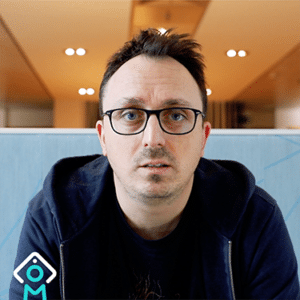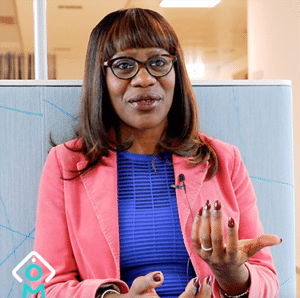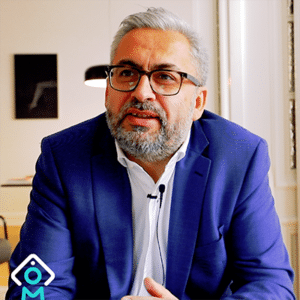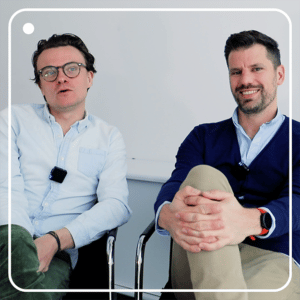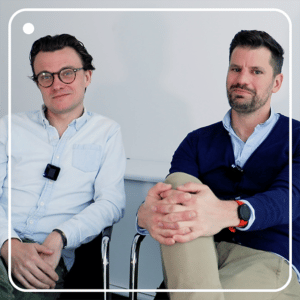Creating in the coliving sector
In this Meet an entrepreneur video, Aurélien Dobbels and Nicolas Legay,
co-founders of Cocoonut since 2020, share their entrepreneurial adventure in the co-living sector in Luxembourg.
- What were the steps to bring your idea to life?
- The first big challenge?
- How long between the idea and the launch?
- How has the project evolved?
- What business model and profitability?
Find out all the information about Cocoonut on the website: livecocoonut.com.
Discover all our entrepreneur videos and our expert articles on meetanentrepreneur.lu.
You liked this content?Share it now!
Bookworm? Read the transcript!
Transcription de l'intervention de Aurélien Dobbels & Nicolas Legay
Even if we have a great technological tool, if we don’t have a house to put people in, it’s useless.
Creating in the coliving sector
Aurélien Dobbels and Nicolas Legay, co-founders of Cocoonut since 2020
What were the steps to bring your idea to life?
I’m an expat here myself, so it’s not very far. But in any case, I still had to face the challenge to find an accommodation that was not necessarily very good, not practical and relatively expensive
and so it resonated right away. I carried on with this project but I ran out of steam and so I went back to work for the International Bank in Luxembourg where I met Nico and we both ran quite a lot. During a race, we talked about coliving and he liked it too. It went from an idea to a few slides, then from a few slides to a business plan, then from a business plan to registration to the RCS and a small fundraising, the first buildings and then it all came together. In any case, we are delighted now to be entrepreneurs and to have left our former life as employees.
The first big challenge?
It’s about getting started. It sounds a bit silly to say it like that, but it is to find the first project on which you can create the MVP. Some MVPs are easier to create than others. When you are full tech, it is relatively simple. Here, we’re going to talk about user experiences, about flatmates. So you have to find a rather large property to accommodate multiple tenants. And it was this first step that was the most complicated to find.
Even if we have a great technological tool, if we don’t have a house to put people in, it’s useless. And in Luxembourg, the legislation on colocation and coliving is relatively restrictive.
And there aren’t many houses that are suitable for it, at least not the existing ones. That’s why it took us a long time to get our first house and once we had it, we had to do the work, and therefore between the moment we created it and where we welcomed our first tenants, it took, I would say, a long year.
How long between the idea and the launch?
We started to talk about it in July 2019 and created the company in February 2020. We raised funds in September 2020 and welcomed our first tenants in June 2021.
How has the project evolved?
We went through several stages, that is to say that to create the first property where we would welcome our first tenants, we said to ourselves “well, we have to buy a house”. And then comes the question of the acquisition capacity, which we didn’t have. So we said to ourselves “let’s become tenants of this house”. And there too, there were many constraints that we had to deal with, notably finding the right landlord to come and rent and to sub-let to co-tenants. And then finally, we met our first investors quite quickly, with whom we discussed that it was rather natural to become space managers rather than tenants, and to find a format where finally we had investors and landlords on one side. And then we, as operators, property managers, space animators to manage it all. So in the end, finding that right format is what took us time and each time we said to ourselves “OK, we don’t want to be landlords, we don’t want to be tenants”. Let’s become managers.
What business model and profitability?
We’ll start with an initial discussion with the investor or landlord to find out which projects we’ll work on together and reach an agreement. This is also a first way to get paid, knowing that the promise for the landlord is that there is an investment in furnishings to be made. But the objective is that it can add value to future rents. Then there is the delivery stage, until tenants are welcomed and the property is finally ready for occupancy. There, our role will be to manage the property and take management fees like a traditional real estate agency which will take certain percentages of the rents. We will take between 8, 10, 12% depending on our missions which are defined with the landlord and it is our other source of income.
Indeed, there is one more intermediary. But using our services increases the profitability of the properties we offer.
One of our strengths is our ability to guarantee, at least on paper, a maximum occupancy rate due to our operation. In other words, today we have a somewhat industrialized approach to the rental management aspect. In our indicators, it usually takes between a few minutes to a few hours to find the next tenant. So we don’t have a rental void at all.
